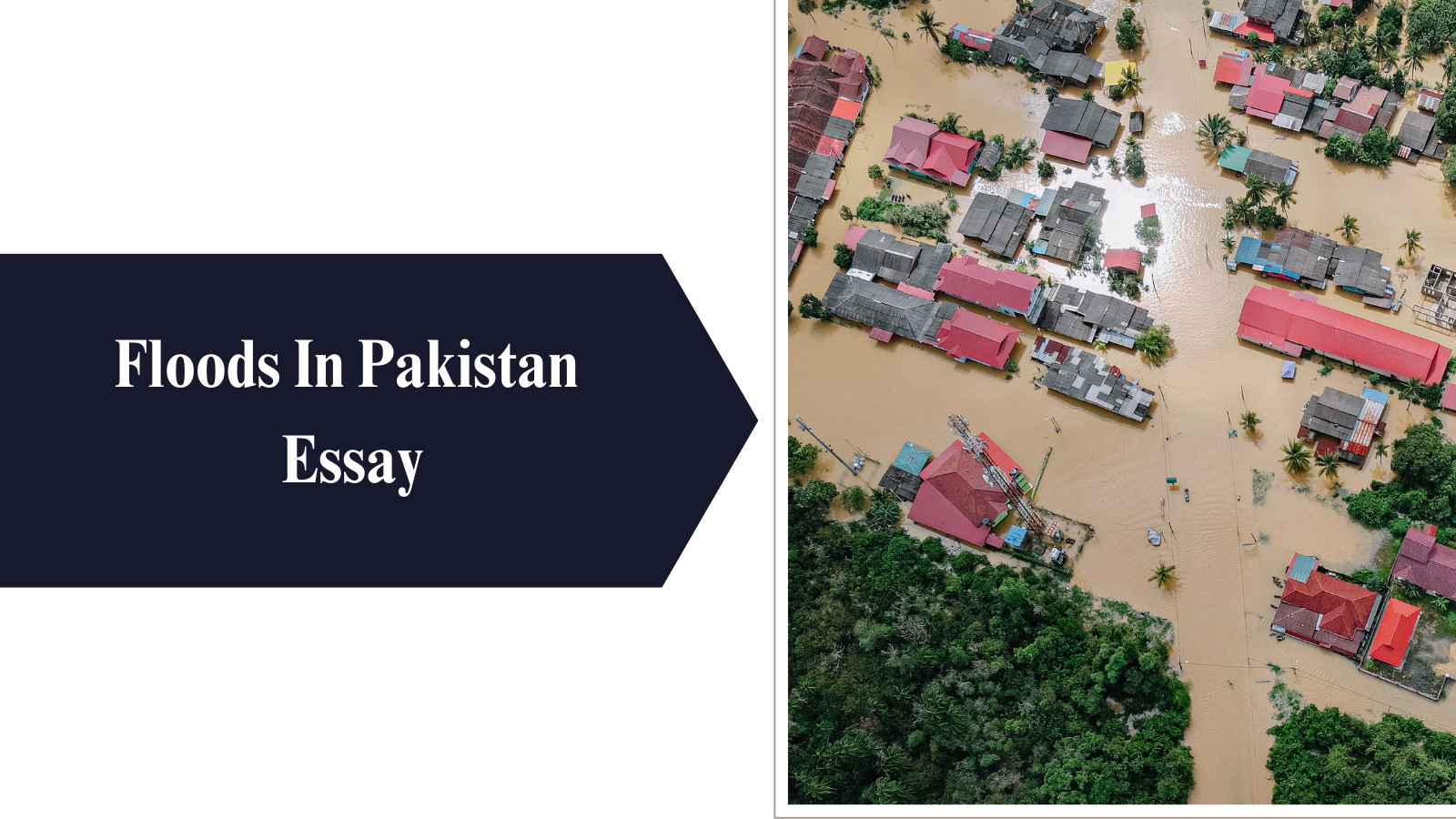This essay talks about the big problem of floods in Pakistan that happen again and again. They hurt the country’s money and things. The essay looks at the very bad flood of 2022, which was the worst one ever in Pakistan.

Floods In Pakistan Essay
In Pakistan, floods have become a recurring natural disaster that has wreaked havoc on the country’s resources and economy. The most recent flood occurred in 2022 and was the worst in the state’s history. More than a third of Pakistan was flooded, with European Space Agency (ESA) satellite images showing the country underwater The flooding was caused by the monsoon season, which usually brings heavy rains, but this year’s monsoon was the wettest since when records began in 1961 A long lake was created and the floods caused extensive damage, including the loss of millions of acres of crops and hundreds of thousands of livestock. The floods also displaced millions of people and spread infectious diseases.
Pakistan is responsible for less than 1% of the planet’s greenhouse gas emissions, but is the eighth most vulnerable country to climate problems according to the Global Climate Risk Index The country has struggled politically and economic turmoil, and floods have only added to his suffering. It highlights the need for Pakistan to take immediate action to mitigate the impact of climate change and prepare for future natural disasters.
Flood Disaster in pakistan essay
Pakistan often faces natural disasters, particularly floods. These floods can be due to heavy rain, snow melting, rivers overflowing, or dams breaking. They can severely affect people’s lives, the environment, and the country’s infrastructure.
In 2022, Pakistan experienced one of its worst flood disasters. Monsoon rains caused sudden floods and landslides all over the country, impacting more than 33 million people. The floods resulted in over 1,000 deaths, injured more than 1,500 people, forced over 180,000 people to leave their homes, and damaged or destroyed over 500,000 houses. They also led to the loss of 700,000 livestock and damaged over 3.6 million acres of crops. The floods damaged many roads and bridges, making it difficult to carry out relief and rescue operations.
These floods were due to an intense monsoon season, made worse by climate change. Pakistan and north-west India had an unusually severe monsoon season in 2022. One place in Sindh had 1,288 millimeters of rain in August, much more than the usual monthly average of 46mm. Pakistan’s climate change minister, Sherry Rehman, described the floods as “unprecedented” and “the worst humanitarian disaster of this decade”.
The floods revealed Pakistan’s lack of readiness to deal with such a large disaster. The government and the army struggled to provide timely and sufficient help to the affected people, due to a lack of resources and coordination. The government was criticized for its slow response and for misusing funds. The international community also didn’t respond quickly enough to the crisis.
The floods had long-lasting effects on Pakistan’s social and economic development. They increased poverty and vulnerability among millions of people who lost their homes, lands, jobs, and assets. They also increased the risk of diseases, malnutrition, and mental health problems, especially among children and women. The floods disrupted education and health services and water and sanitation systems in the affected areas. They also led to social unrest, political instability, and increased militancy and terrorism.
The 2022 floods in Pakistan were a wake-up call for the government, society, and the international community. They highlighted the need for urgent and effective measures to prevent and mitigate such disasters in the future. The government needs to improve its disaster management system and invest in infrastructure that can withstand climate change. It also needs to address the root causes of vulnerability, such as poverty, inequality, land degradation, deforestation, and urbanization. Society needs to raise awareness, mobilize resources to support the affected people and communities, and promote environmental conservation and adaptation.
